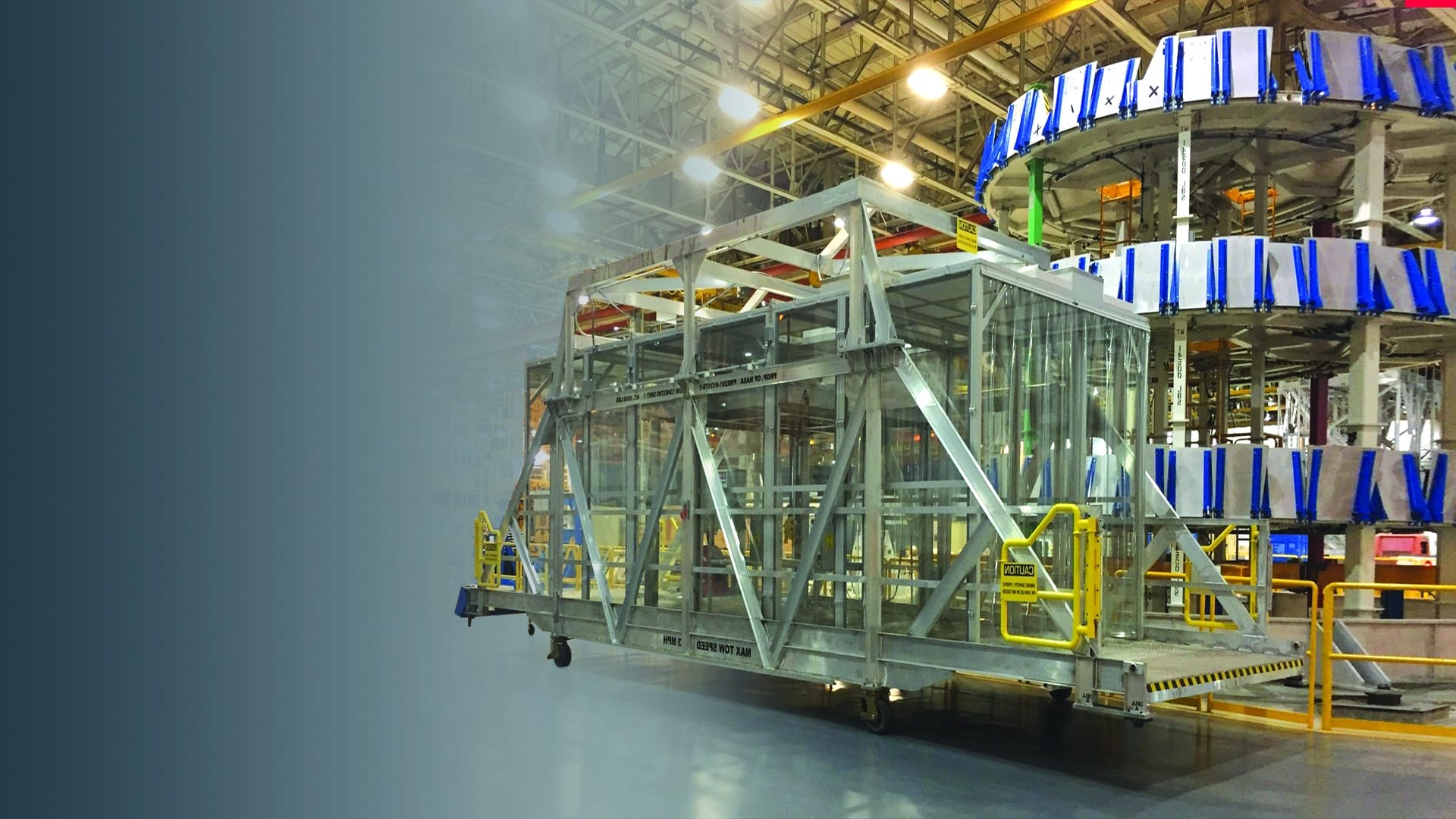By Ward Patton, Director of Sales as featured in Cleanroom Technology Magazine
ARTICLE OVERVIEW
Ward Patton from Subzero Engineering gives an overview of how the cleanroom sector is working with the aerospace and defense industries
Performance, precision and reliability are non-negotiables in the aerospace and defense sectors.
Every tiny detail counts, whether you’re building sophisticated missile systems, advanced
weapon modules, or assembling satellites. To preserve the stability of critical applications, reduce the risks of contamination and to ensure strict quality requirements are upheld, cleanrooms are a vital element of this industry. Even trace amounts of particles can compromise the integrity of extremely sensitive, sophisticated and complex equipment. Cleanrooms offer regulated environments to shield components from impurities, electrostatic discharge and other environmental elements that might degrade dependability or performance.
In general, aerospace/defense organizations require a cleanroom for the following reasons:
- Producing parts in an atmosphere free of contaminants and dust. Contamination can result in faults or decreased reliability in the intricate components used in precision products such as guided missile systems, drones or space travel
- Substances, coatings and adhesives, necessary to the viability of the constituent part, require stable and clean conditions with incredibly tight tolerances for proper adhesion and structural
integrity. - Research in a sterile, clean environment. Materials can react to mechanical and thermal stresses during launch and orbit and can potentially be impacted by contaminants.
- Pollutant-free assemble of components. Defense programs working in the scorching desert or at great depths and aerospace projects functioning in the harsh vacuum of space
must be able to survive environmental difficulties without failing, where even minute pollutants could cause catastrophic failures.
Every tiny detail counts, whether you’re building sophisticated missile systems, advanced weapon modules, or assembling satellites
Key features of aerospace and defense cleanrooms
Cleanrooms using high-efficiency particulate air (HEPA) and ultra-low penetration air (ULPA) filters that can remove particles as fine as 0.3 microns, are incorporated into cleanrooms used in aerospace and defense applications to meet the strict industry criteria. Space agencies and aerospace manufacturers must follow stringent cleaning standards such as ISO 14644 or NASA’s planetary protection protocols to ensure equipment operates as planned, while defense projects are subject to exacting military and regulatory standards for quality and cleanliness.
These unique demands also necessitate precise control of temperature, humidity, pressure and airflow for sensitive processes and materials.
Cleanrooms equipped with antistatic flooring and specialised tools can limit damage to electronic components. In addition, delicate assemblies, such as those involving optical instruments, require vibration-free environments.
This is often achieved through advanced structural designs.
Customized designs
A custom cleanroom can include multiple rooms, designed with multiple special features, such as sliding doors, wall switches, glove ports, or a pass-throughs.
For the room to fit the needs of the project and/or work environment, while meeting the required ISO cleanliness rating and specifications such as being Class A fire-rated, electro-static dissipation (ESD) compliance, a custom cleanroom can be constructed using specialised materials. The room can even be portable and capable of being disassembled, moved and reassembled at different facilities.
Some examples of customised designs include the James Webb Space Telescope develpment, Iron Dome Lasers production, and a NASA rocket with a bridge.
The Webb
The James Webb Space Telescope, also know as the Webb, as developed by the National Aeronautics and Space Administration (NASA), in partnership with the European Space Agency (ESA) and the Canadian Space Agency (CSA).
In this case, the telescope was to be folded inside the nose cone of an Ariane 5 rocket.
An ultra-clean environment was necessary for the telescope to conduct infrared astronomy using high-resolution instruments, so for this task an octagonal Airblock Softwall cleanroom from SubZero Engineering (manufacturing company of the Simplex cleanroom product line) was installed at the top of the launch building, surrounding the rocket’s nose cone.
3,700 Number of satellites predicted to launch in the next decade
Iron Dome lasers
In 2019, an Iron Dome missile defense system was built for the US military, using solid-state lasers to target, intercept and destroy incoming rockets and other airborne weapons.
The laser components needed to be assembled in a contaminant-free environment. An ISO Class 6 cleanroom was built requiring three 28 ’x 40’ x 12’ Airlock enclosures, each with its own gown room. The cleanroom was accessed via high-speed rollup doors, and was seismically rated, using white Polypro inserts in the ceiling and wall frames.
Each enclosure included laser curtains, mounted on screws around the perimeter of the room, while pass-through curtains served as barriers to prevent stray laser harm.
A cleanroom on a bridge
In 2016, a 60-foot rocket featuring a spherical nose cone, was manufactured by Boeing and assembled at NASA’s Michoud facility in New Orleans, Louisiana.
A circular opening in the top of the nose cone allowed technicians to enter and clean it.
To aid the technicians, a 27’ x 12’ aluminum bridge built by Ascent Aerospace was lifted by crane and placed above the rocket.
A rectangular cleanroom was built on the bridge itself and included hoist attachments to lower technicians down through a hatch in the bridge floor and through the nose cone’s circular opening, to clean the rocket interior.
The bridge cleanroom was constructed of transparent Polysim walls and included air fans and HEPA filters to purge the room of air particles. Air fans in the anteroom removed particulates before the technicians entered the controlled work area through a strip curtain.
Future trends
As technologies evolve, there is an increasing need for cleaner surroundings. As breakthroughs such as quantum computing for defense applications and deep-space exploration missions advance, the requirement for ultra-clean conditions will only increase.
To address the unique requirements of nanoscale manufacturing, we anticipate seeing more robotic methods for testing and assembly to reduce human-induced contamination, to reach previously unheard-of degrees of cleanliness in the future.
The necessity for accuracy, dependability, and rigorous adherence to cleanliness standards is why the aerospace and defense sectors depend on cleanrooms. By offering the best conditions for manufacture, assembly and testing, cleanrooms safeguard investments in costly missions and facilitate cutting-edge technology development. In this high-stakes sector, the danger of contamination and failure would be intolerably high without cleanrooms.
Cleanrooms also play a vital role in fostering technical advancement and operational dependability, guaranteeing adherence to strict military requirements and aerospace regulations.
Cleanrooms will remain essential as technologies develop and the need for increasingly complex systems grows.
About Simplex Cleanrooms by Subzero Engineering
Headquartered in Salt Lake City, Utah, Subzero Engineering is the global leader in turnkey engineering solutions for industrial cleanrooms. Subzero owns the Simplex product brand, one of the most prominent names in modular cleanrooms, softwall curtains, strip doors, separation, and process isolation. The Simplex cleanroom line has set industry standards for over 40 years, with products that are engineered to create, optimize, and protect contaminant-free environments. Subzero’s Simplex engineering team brings industry expertise and a proactive approach to creating custom cleanrooms and solving unique isolation challenges.




